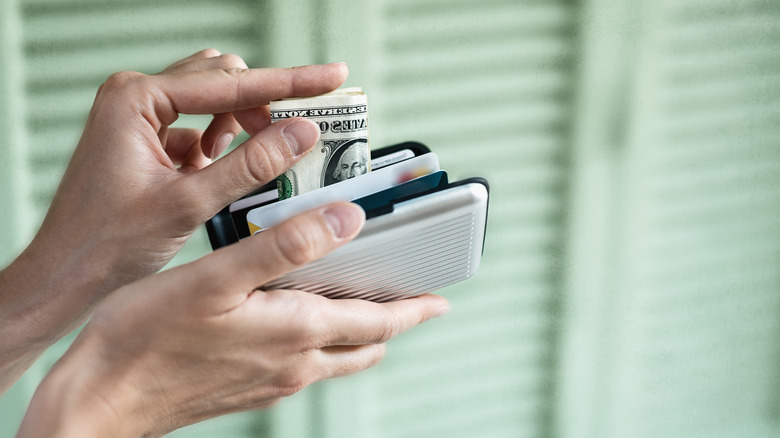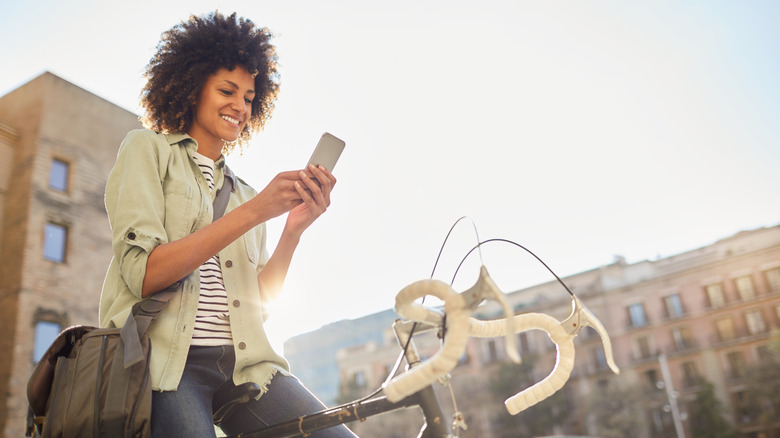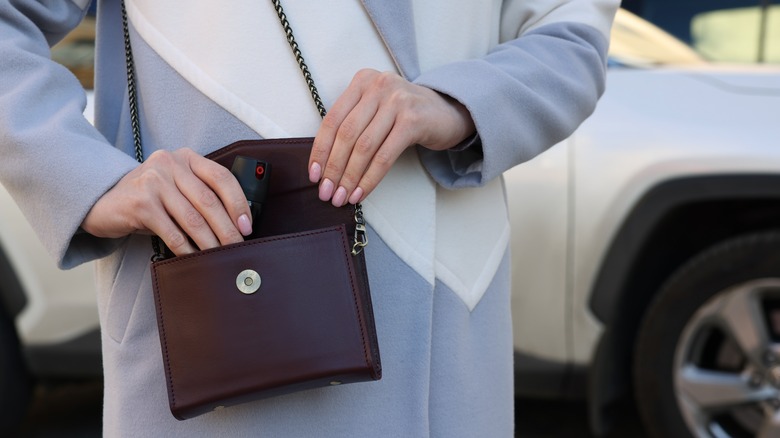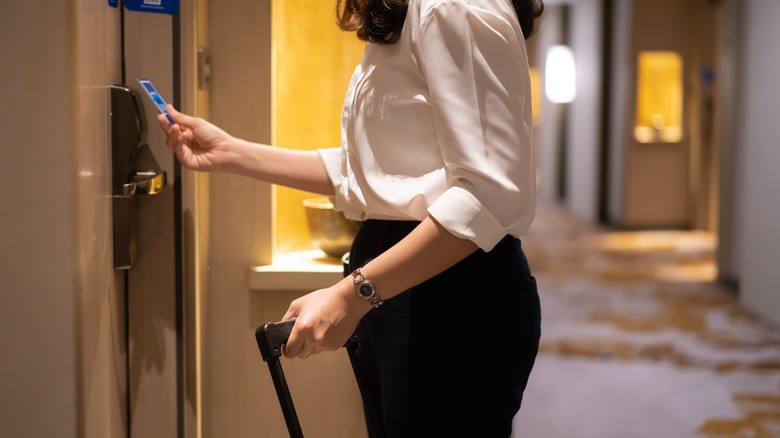Self-Defense Essentials Every Solo Traveler Should Own
There is a lot you need to do to prepare before a solo trip, such as making sure you have everything packed and your adventure planned out. In the hectic mess that is packing for a trip, there's one thing you don't want to overlook packing for, and that's your safety. Though it's likely the local agents and park rangers are looking out for your well-being, they aren't able to keep an eye on everyone at all times. That's why it's important to take steps to protect yourself from any dangers.
Joanne McNellis, Founder and CEO of Travel Safety Solutions, talked exclusively with Outdoor Guide to discuss some of the best self-defense methods for solo travelers, no matter where they are going. "The saying 'the best offense is a great defense' is especially true when it comes to travel, particularly for solo travelers. Ensuring a safe journey starts right from the planning phase, choosing the right destination, selecting secure accommodations, and more. Once a traveler is confident in their destination, it is time to focus on the steps needed to mitigate risks while on the road," she shares.
It's not only bodily harm from people you need to worry about. While you do want to take steps to protect yourself against injury and robbery, you also need to consider keeping your private documents safe, as well as potentially protecting yourself from invisible, but no less deadly health threats. While some items might be standard in your defense kit, there are certain apps, wallets, and alarms you'll want to consider taking with you on every trip.
RFID wallets
Most people know to keep their wallet somewhere safe and secure while traveling. Pickpockets are everywhere, especially where crowds are common, and loose cards and cash can easily be grabbed by someone walking by on the street, especially in a crowded area. However, there's another scam going around that even a hidden wallet might not be safe from. It involves your card — and the chip inside it — being scanned.
Cards containing RFID (Radio Frequency Identification) chips are convenient as they allow you to pay with just a tap. They are generally also safer from card skimmers. However, as technology improves, so do scammers. By using radio frequencies, they can potentially scan your card, collect your information, and even create a clone of your chip. The bigger danger is the RFID chip in passports and licenses, which can be scanned the same way, enabling thieves to steal your identity. It is a rare event, but still possible.
To prevent this, RFID-blocking technology is an incredibly useful tool to keep around. As McNellis says, "Anti-theft wallets with RFID protection are also essential as they create a shield around credit cards and ID, preventing digital theft." Thankfully, there are plenty of wallets available to help block this skimming. Or, if yours doesn't, you can purchase an RFID-blocking card to keep with your ID and credit cards to block the radio frequencies.
Location-sharing apps
McNellis mentions where to start when it comes to protecting yourself. "For solo travelers, who often want to dive into the local culture, personal protection begins with location sharing, staying in contact with someone, and minimizing the number of people who know you are alone."
This is why one of the first tools to help you stay safe is your phone with a location-sharing app installed on the device. While it may feel a little odd to have a tracking app on your phone, it can actually be pretty beneficial. Additionally, you likely already have some of the apps on your device — you just need to know how to use them properly. For example, Google Maps, Facebook, and WhatsApp all offer a way for you to share your whereabouts. Many apps specifically made for location sharing also have alarms that you can press if you feel unsafe for any reason, which will then alert those who you share access with to the app.
As McNellis mentions above, only share your location with trusted friends and family so they can help make sure you're safe. By letting people you trust keep track of your location, you have someone who can tell local police where you were spending time if something does happen to you. Consider not only sharing your location, but a rough itinerary with these trusted people as well. That way, if you're in one place too long or deviating from your travels without having told them, they will know early on if something is wrong.
Personal alarms
"Consider carrying personal safety alarms with lights and loud sirens or whistles, anything that can create a distraction and draw attention," McNellis says. There are quite a few tools available to help raise an alarm to alert people nearby that something is wrong. Whistles are useful for all parts of your adventure, as they can also be used when you need to call for help in an area with no cell phone service.
There are also keychain alarms. Like in the video above, they generally have a few different settings. The most common are lights and alarms to attract the attention of people nearby. The alarm sounds after a piece is disconnected or pulled away from the part connected to your keyring. The one in the video above, made by Birdie, has an additional feature of offering calls when you feel uncomfortable or scared, but it's not the main point of the tools.
These alarms are made to be loud and bright. They primarily serve as a way to scare off potential assailants. After all, most try to be quiet and secretive when they attack. However, if your attacker decides to stick around, the alarm will potentially draw in a crowd or someone able to help you. Like other items on this list, whistles and personal alarms are generally small and unassuming, taking little to no space in your luggage.
Pepper spray
Pepper spray is a common safety item and while it does work well most of the time, it's not always the best option. It shares the same ingredients used in bear spray, but in lower concentrations. You may think that if it works well for bears then it's a great option for people, but not everyone handles the volatile compounds in the weapon the same way. For example, depending on the pain tolerance of the attacker, this self-defense tool might not deter or inhibit them all that much.
Also, it doesn't stop them from moving. There's still a good possibility the attacker will come at you. Even if they struggle to see, they can reach out and grab you, which, in turn, means there's a chance of spreading the pepper spray into your own eyes, limiting an escape. Narrow spaces, wind, and misuse of the canister can also lead to you injuring yourself just as much as your attacker.
However, no matter which you choose, you need to be aware of the rules for pepper spray and similar tools when flying. TSA requires this weapon to be in checked baggage, so if you're traveling light or want immediate protection when you land, this isn't a good option. Additionally, certain countries don't allow pepper spray at all or have strict rules on the type, size, and strength. For example, if you take a hike through France to experience the local culture, there are some stringent rules on carrying it, though it's not outright illegal. "Whatever your choice, feeling secure is key to enjoying your journey," notes McNellis.
Protect your living space, too
Depending on how you're traveling, you may want to consider protecting the space you're staying in as well. Whether you're in hotels or a rented home, you can help slow down or scare away anyone trying to enter your room with items like an alarmed door stop or extra safety locks.
However, McNellis mentions one more important tool to have to ensure you stay safe. This item doesn't protect you from other people, but a silent and dangerous enemy; carbon monoxide. "While staying in an apartment or Airbnb, investing in a portable carbon monoxide detector is crucial. Tragically, there have been instances where travelers lost their lives due to carbon monoxide poisoning. This $30 investment can be a lifesaver in accommodation where equipment is not properly maintained."
She isn't exaggerating. According to NBCDFW, while most people know to protect against people looking to steal or hurt them, or getting stuck somewhere unfamiliar, they don't necessarily think about carbon monoxide. However, it's a very real threat. In 2023 alone, six different leaks in hotels in the United States led to the injury of 35 people and the death of two others. So, it's not just an Airbnb you need to worry about, but hotels as well. Since carbon monoxide is impossible to see or smell, it's important to have a device to help you notice when a problem arises. They're not just helpful in hotels either, as they can be used to detect carbon monoxide in enclosed spaces, so they're beneficial in car survival kits and as a part of your camping equipment, as well.




